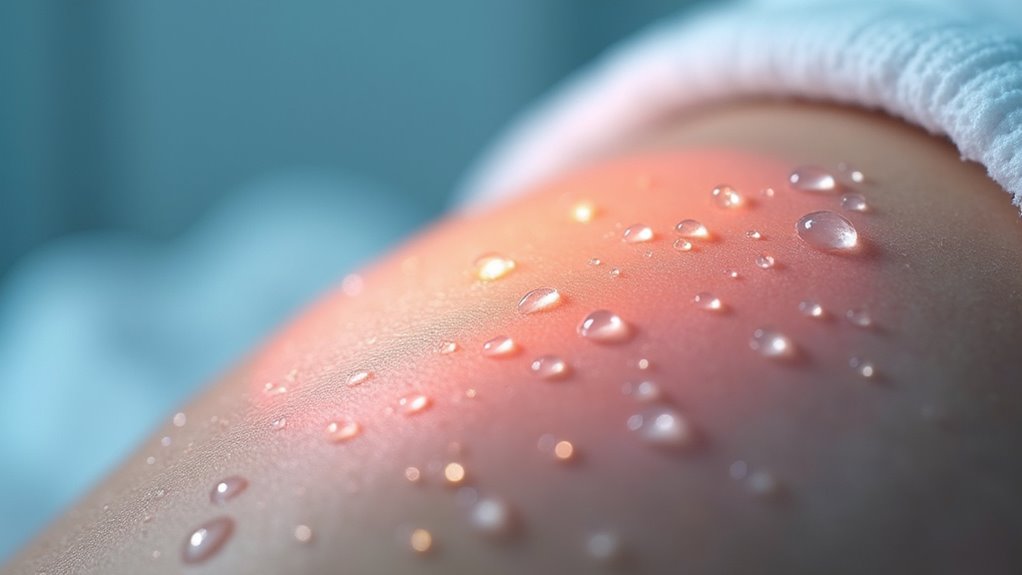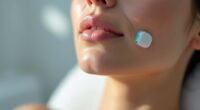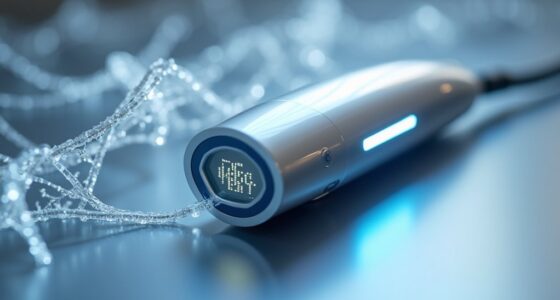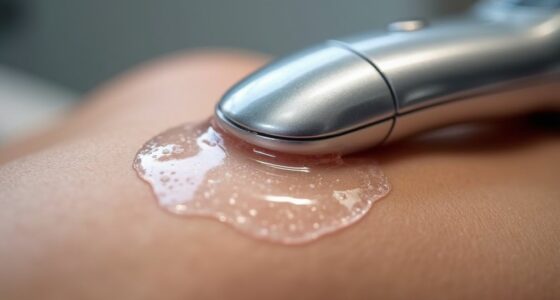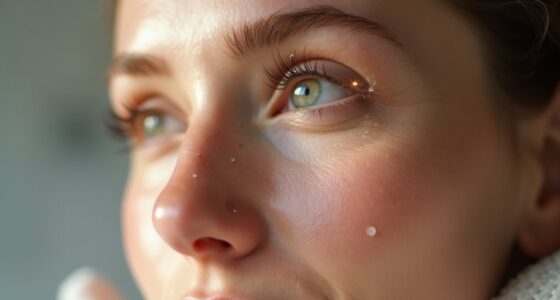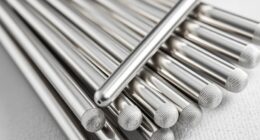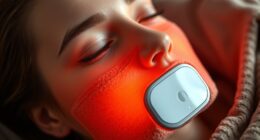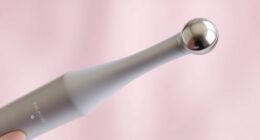RF treatments generate controlled heat deep within your skin to stimulate collagen production. This heat can cause temporary redness, swelling, and sensitivity, which is why a cooling-off period is essential. Cool-down helps reduce inflammation, minimizes swelling, and prevents side effects like hyperpigmentation or scarring. It also supports faster healing and improves your overall results. If you keep exploring, you’ll discover how proper aftercare can maximize your skin’s recovery and longevity.
Key Takeaways
- Cooling reduces inflammation and swelling caused by the heat generated during RF treatments.
- It minimizes discomfort and helps skin recover safely from deep tissue heating.
- Cooling prevents excessive tissue trauma, reducing risks of adverse effects like hyperpigmentation or scarring.
- It supports optimal healing by maintaining skin hydration and calming sensitive tissues.
- A cooling-off period allows skin to stabilize and ensures long-lasting, safe results from RF procedures.
The Science Behind RF Energy and Skin Response
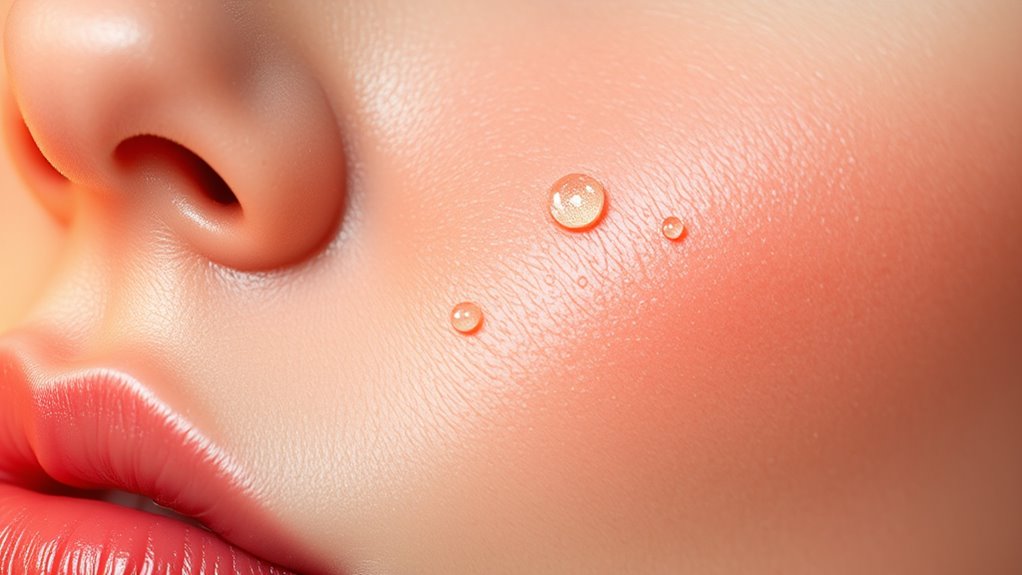
Radiofrequency (RF) energy works by delivering controlled heat to the deeper layers of your skin, stimulating collagen production and tightening tissues. This process enhances skin elasticity by encouraging your body to synthesize new collagen fibers. As you undergo RF treatments, the heat causes minor damage to the collagen structures, prompting your skin’s natural healing response. Over time, this leads to firmer, more youthful-looking skin. The increased collagen synthesis improves elasticity and helps reduce sagging and fine lines. The targeted heat also promotes tighter connective tissues, giving your skin a smoother appearance. Because RF energy penetrates beneath the surface, it can effectively address deeper skin layers without harming the outer layer. This controlled process is what makes RF treatments a popular choice for skin tightening and rejuvenation. Regular monitoring of performance and efficiency can help ensure optimal results and safety during the treatment process.
Common Immediate Reactions Post-Treatment
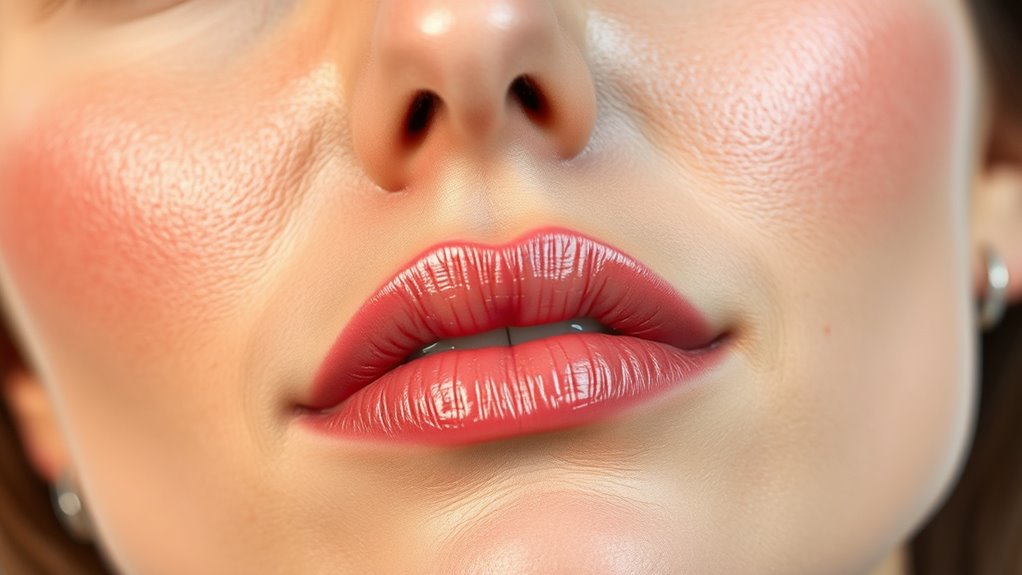
Right after your RF treatment, you might notice some temporary skin redness or mild swelling. Your skin could also feel slightly sensitive to touch. These reactions are common and usually subside quickly.
Temporary Skin Redness
You may notice temporary skin redness immediately after an RF treatment, which is a common reaction. This redness indicates increased skin sensitivity as your skin responds to the procedure. It’s a normal part of the healing process, and usually, your skin’s redness will gradually fade. To help with redness reduction, avoid harsh skincare products and keep your skin moisturized.
Here are three ways to manage this reaction:
- Keep your skin cool and avoid heat sources.
- Use gentle, soothing skincare to calm irritation.
- Allow time for your skin to recover before exposing it to sun or makeup.
Mild Swelling Occurs
Mild swelling often appears immediately after an RF treatment as your skin responds to the procedure. This reaction is typical and results from increased skin sensitivity and the body’s natural healing process. The swelling may be noticeable but usually isn’t painful and tends to resolve within a few hours or days. To help with swelling reduction, keep your skin elevated and avoid strenuous activities. Applying a cold compress can soothe the area and minimize swelling further. Remember, this swelling is a normal response and part of your skin’s way of healing. It’s important to listen to your body and give your skin time to recover before resuming any aggressive skincare routines. This temporary reaction underscores why a cooling-off period is essential after RF treatments. Proper post-treatment care, including skin healing strategies, can significantly influence your recovery process.
Sensitivity to Touch
After an RF treatment, your skin often becomes more sensitive to touch, making it feel tender or slightly sore when you explore the area. This increased skin sensitivity heightens your touch perception, causing even gentle contact to feel more intense. You might notice:
- A heightened awareness of every touch, making simple tasks uncomfortable.
- An emotional reaction to the tenderness, like frustration or concern.
- A desire to avoid contact altogether to prevent discomfort.
- The importance of skin protection during this period to avoid further irritation and promote healing.
These sensations are normal and temporary, but they remind you why a cooling-off period is essential. Protecting your skin during this time helps minimize irritation and supports proper healing, ensuring your results are safe and effective.
Why Cooling Off Reduces Inflammation and Swelling
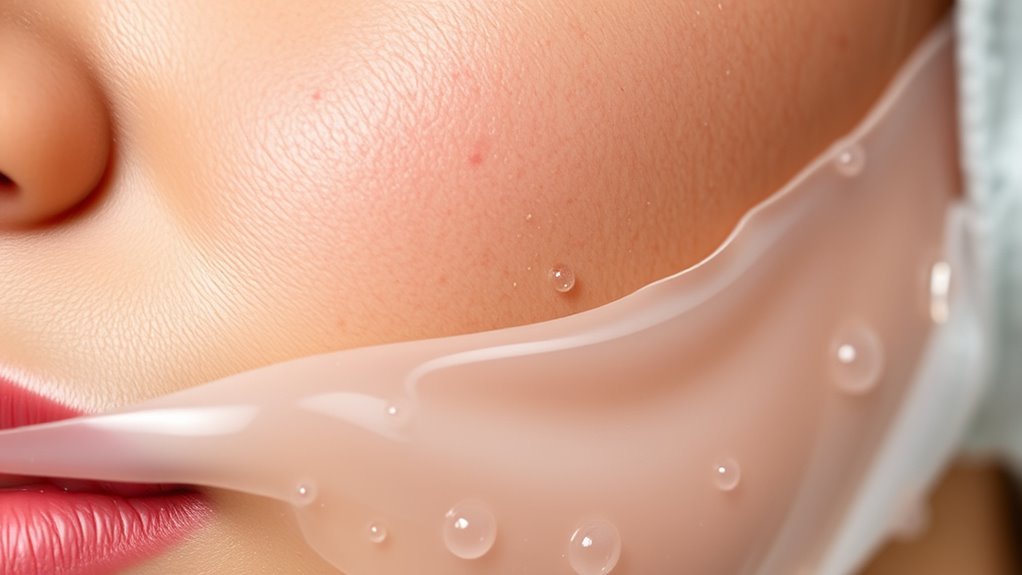
Cooling off after RF treatments helps reduce inflammation and swelling by constraining blood flow and calming the affected tissues. This process minimizes fluid buildup and eases discomfort, promoting faster recovery. When you cool the treated area, it helps preserve skin hydration, preventing dryness or tightness that can worsen inflammation. Reducing swelling not only improves your physical comfort but also supports emotional well-being, as it decreases visible redness and puffiness. A cooler, calmer skin environment encourages your body’s natural healing response, making your skin feel more comfortable and less tense. By taking this cooling step, you help your skin recover more smoothly and maintain a more natural, relaxed appearance, which boosts your confidence and overall sense of well-being. Additionally, applying cold therapy can stimulate circulation and assist in delivering essential nutrients to the skin tissue during recovery.
The Role of Controlled Cooling in Skin Healing
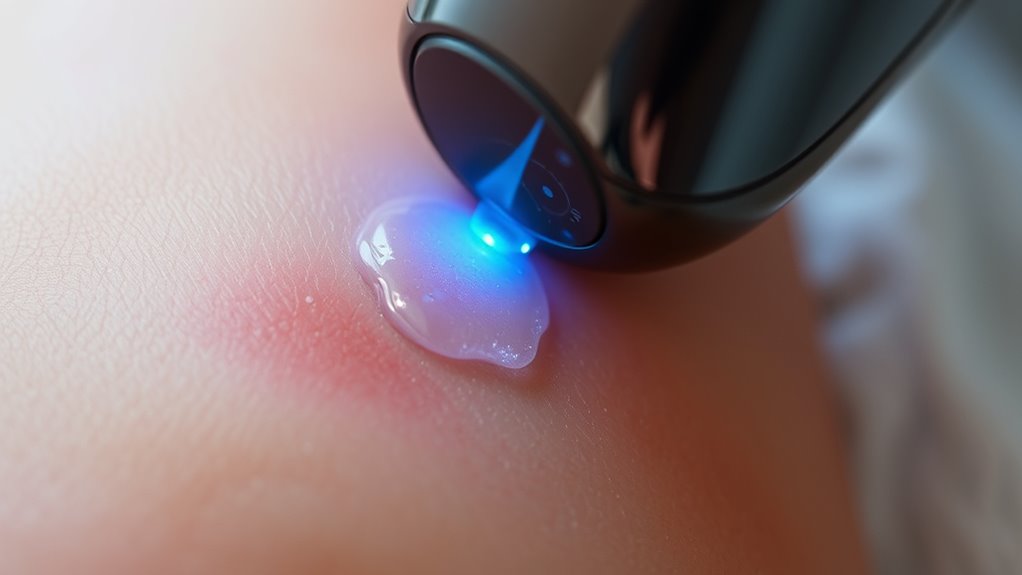
Controlled cooling helps protect your skin from further damage after RF treatments. By carefully lowering the skin temperature, you support a faster healing process. This approach minimizes tissue injury and gets you back to normal quicker. Additionally, implementing proper cooling techniques can optimize treatment outcomes and enhance patient comfort.
Minimizing Skin Damage
To minimize skin damage during RF treatments, controlled cooling plays an essential role in protecting your skin’s surface. Proper cooling maintains skin hydration, preventing dryness and irritation that could affect your emotional well-being. It also ensures your skin stays calm and resilient, reducing the risk of adverse reactions. Here are three ways controlled cooling benefits you:
- Preserves skin hydration, keeping your skin soft and supple.
- Minimizes redness and swelling, boosting your confidence.
- Promotes a comfortable experience, supporting emotional well-being.
Additionally, understanding the importance of silly tantrums during treatments can help manage expectations and create a more relaxed experience.
Accelerating Recovery Process
When you undergo RF treatments, incorporating effective cooling strategies can substantially speed up your skin’s healing process. Controlled cooling reduces inflammation and minimizes discomfort, allowing your skin to recover faster. Maintaining skin hydration during this period is essential, as it supports cell repair and keeps your skin supple. Proper cooling also helps prevent overheating, which can delay healing. Alongside physical care, emotional support plays a crucial role; staying relaxed and positive can reduce stress-related inflammation. Using cool compresses or specialized cooling devices can further enhance recovery by calming your skin and easing discomfort. By combining these cooling techniques with good skin hydration and emotional support, you can accelerate your healing, achieve better results, and return to normal activities more quickly.
Minimizing the Risk of Hyperpigmentation and Scarring
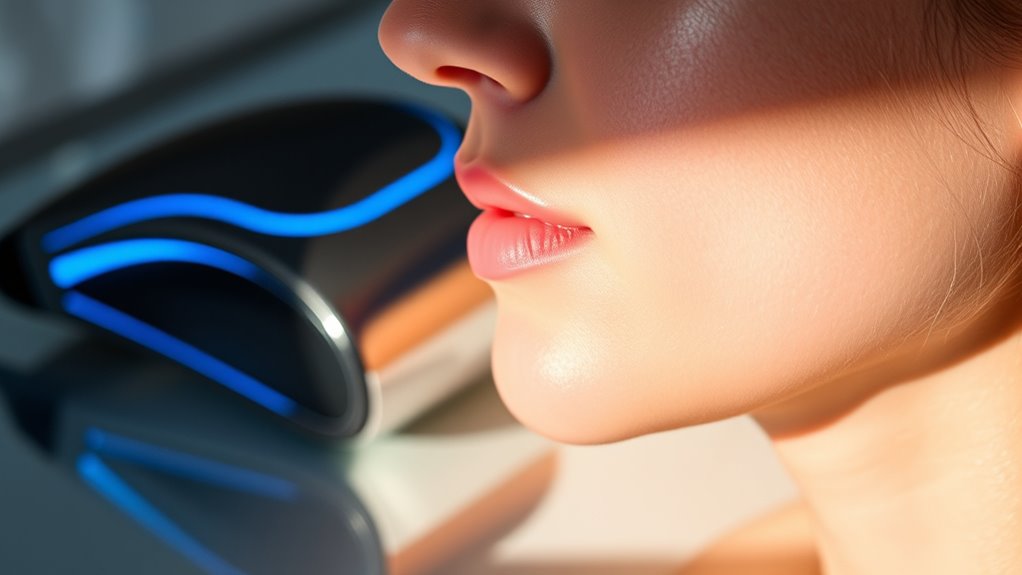
Minimizing the risk of hyperpigmentation and scarring is essential for achieving safe and effective RF treatments. Proper planning guarantees laser safety and enhances your comfort throughout the procedure. To protect your skin, consider these key steps:
- Follow your provider’s pre-treatment instructions meticulously to prepare your skin, reducing the chance of adverse reactions.
- Avoid sun exposure before and after treatment, which can trigger pigmentation issues.
- Opt for a trained professional who understands how to customize settings, minimizing trauma and reducing scarring risks.
- Understanding the importance of color accuracy can help ensure the best results by matching skin tones and avoiding unintended discoloration in skin tone matching.
How a Cooling Period Enhances Treatment Outcomes
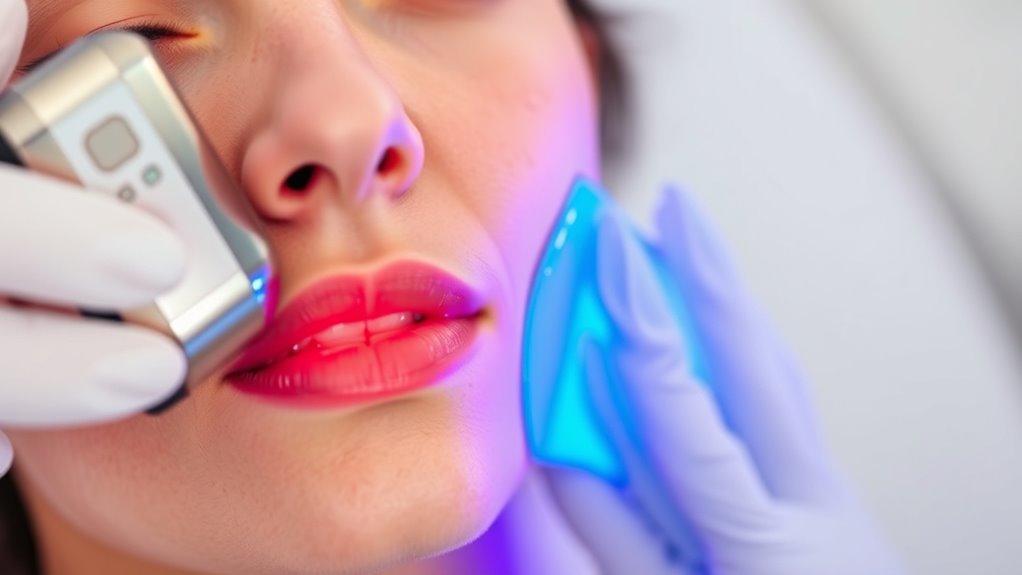
In RF treatments, incorporating a cooling period immediately after the procedure plays an essential role in improving your results. This cooling helps reduce inflammation and minimizes discomfort, making the experience more comfortable for you. When you’re more at ease during and after treatment, your body can focus on healing effectively, leading to better outcomes. Additionally, a cooling-off period allows for better treatment scheduling, giving your skin time to recover between sessions. This ensures each treatment is as effective as possible without risking over-treatment or unnecessary side effects. Incorporating protective styling benefits, such as gentle handling and avoiding harsh treatments, further supports optimal healing. By prioritizing patient comfort through cooling, you help optimize the overall success of your RF procedure, paving the way for smoother, longer-lasting results.
Recognizing Signs That Your Skin Needs Rest
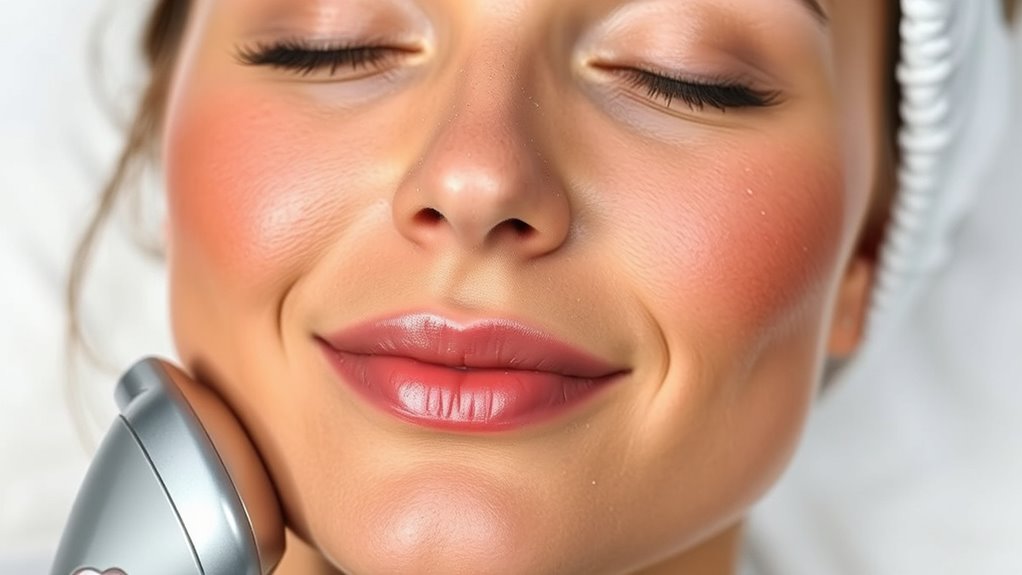
After a cooling-off period, paying attention to how your skin responds can help you determine if it needs more time to recover. Signs your skin needs rest include:
- Persistent redness or swelling that doesn’t fade, indicating your skin’s hydration is compromised.
- Tightness or discomfort that worsens, affecting your emotional well-being and signaling overstimulation.
- Increased sensitivity or soreness, showing your skin is strained and requires extra downtime.
- Monitoring your skin’s response is also crucial to prevent potential adverse effects and ensure optimal recovery.
Recognizing these signs is essential for maintaining healthy skin and emotional balance. Ignoring them can lead to longer recovery times and diminished treatment results. Listening to your skin’s signals ensures you give it the rest it needs, supporting both hydration and emotional well-being.
Best Practices for Post-Treatment Care
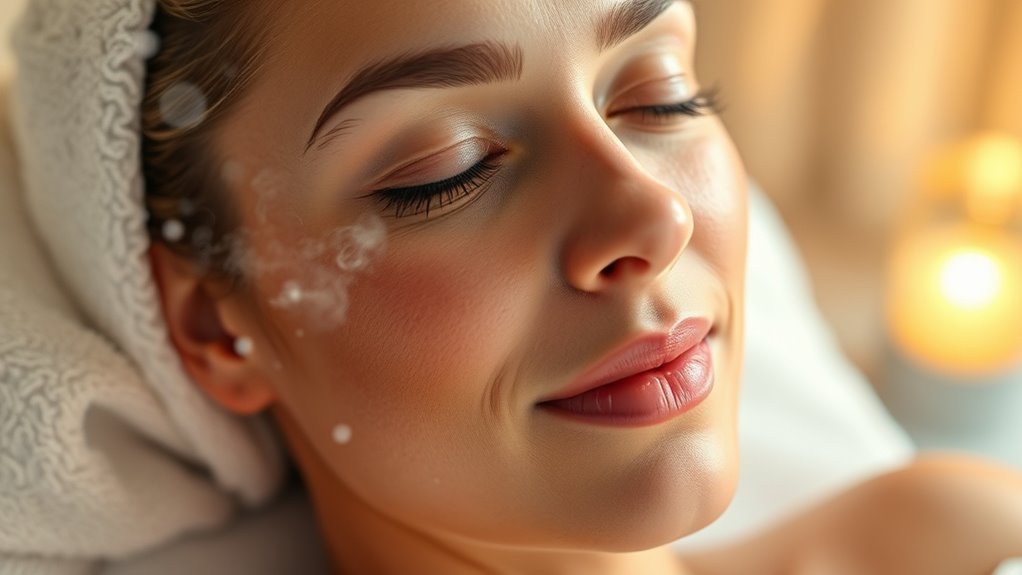
Proper post-treatment care is vital to guarantee your skin heals effectively and the results last. Focus on maintaining skin hydration by drinking plenty of water and using gentle, hydrating skincare products. Sun protection is equally important; always apply a broad-spectrum sunscreen and avoid direct sun exposure. To help you stay on track, here’s a quick guide:
| Care Tip | Details |
|---|---|
| Skin Hydration | Use moisturizers and drink water regularly |
| Sun Protection | Apply sunscreen daily and wear protective clothing |
| Avoid Harsh Products | Steer clear of irritants like exfoliants or alcohol |
| Follow Up Care | Attend follow-up appointments and listen to your provider’s advice |
Additionally, understanding the importance of proper post-treatment care can significantly impact your recovery process.
Long-Term Benefits of Adhering to the Cooling-Off Period
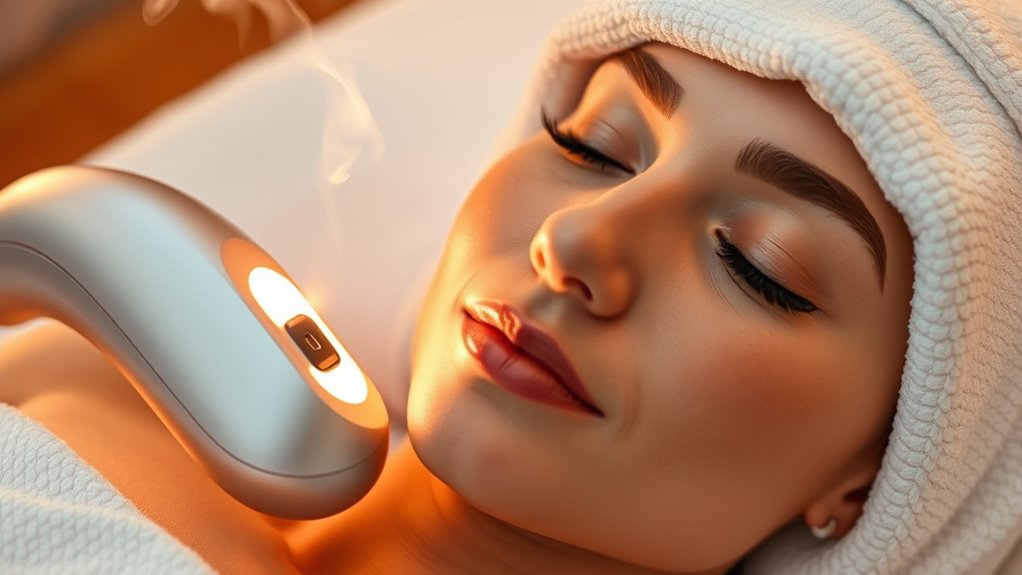
Adhering to the cooling-off period guarantees your skin heals properly and maximizes the long-term results of your RF treatment. When you follow this step, you enhance skin tightening, support effective fat reduction, and slow skin aging. By giving your skin time to recover, you assure lasting improvements. Here’s what you can expect:
- Smoother skin with reduced signs of aging, helping you look youthful longer.
- Enhanced fat reduction, leading to a more contoured appearance.
- Stronger skin elasticity, preventing sagging and maintaining firmness over time.
Skipping the cooling-off period risks compromised results, premature aging, and uneven fat reduction. Committing to this process guarantees your investment in RF treatments delivers the best, most enduring outcomes.
Frequently Asked Questions
How Long Should I Wait Before Scheduling My Next RF Treatment?
You should wait at least 4 to 6 weeks before scheduling your next RF treatment. During this time, your skin’s sensitivity decreases and healing time improves, reducing the risk of irritation or damage. Rushing treatments can interfere with proper recovery. Listen to your provider’s advice, as they’ll consider your skin’s response and make sure your skin has fully healed to achieve the best results safely.
Are There Specific Skin Types That Benefit More From Cooling-Off Periods?
Think of it as a fine-tuned instrument—some skin types respond better to cooling-off periods. If your skin sensitivity is high or you have lower treatment tolerance, a cooling-off period helps prevent irritation and guarantees better results. People with fair, sensitive skin often benefit more, as it allows their skin to recover. So, yes, specific skin types do benefit more from these breaks, making treatments safer and more effective.
Can Skipping the Cooling-Off Period Affect Treatment Results Long-Term?
Skipping the cooling-off period can negatively impact your treatment results long-term. If you overlook this step, your skin sensitivity might increase, leading to discomfort or potential damage. Without proper cooling, the treatment efficacy could decrease, making it less effective. By following the recommended cooling-off period, you help safeguard your skin and ensure you get the best possible results from your RF treatment, promoting healthier, more resilient skin over time.
What Are the Signs That My Skin Is Ready for the Next RF Session?
Did you know that over 80% of clients report noticeable skin changes after one RF session? To know if your skin is ready for the next treatment, watch for healing indicators like reduced redness, decreased sensitivity, and smooth texture. If your skin feels less sensitive and shows signs of recovery, it’s a good sign you’re ready for the next session. Always listen to your skin’s cues for ideal results.
Does the Cooling-Off Period Vary Depending on the RF Device Used?
You might wonder if the cooling-off period varies depending on the RF device used. Device variation impacts treatment timing and recovery needs, so some devices may require longer or shorter cooling-off periods. Always follow your practitioner’s recommendations based on the specific device and your skin’s response. This guarantees the best results and minimizes side effects. Keep in mind, tailored treatment timing helps your skin recover properly between sessions.
Conclusion
By giving your skin the necessary cooling-off period, you’re playing it smart and protecting it from unnecessary harm. It’s better to prevent problems than deal with them later, so listen to your skin’s signals and follow post-treatment guidelines. Patience is a virtue, especially when it comes to skin healing. When you give your skin time to recover, you’ll see better results and avoid setbacks—because sometimes, good things come to those who wait.
